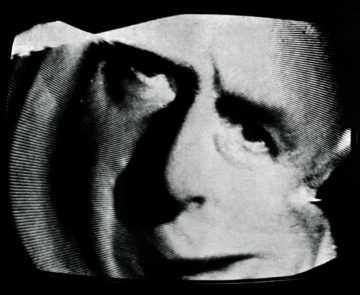Alex Kitnick at Artforum:
 THERE’S SOMETHING ABOUT VIDEO ART that calls for grand theories and epic summations, wild pronouncements and heroic declarations. It’s exciting to see a new technology appear in one’s lifetime and to feel some kind of ownership over it, to see it for what it is or, even more importantly, what it did—how it cut through the world. And since video is, or was, so closely related to television and what used to be called the mass media—it was either its intimate underbelly or a guerrilla weapon made to combat it—its value seemed to go unquestioned. The most important artists wrestled with it (Lynda Benglis, Dara Birnbaum, Nam June Paik, Ulysses Jenkins, Joan Jonas, Richard Serra, Robert Smithson); some of the best writers took it on (David Antin, Allan Kaprow, Rosalind Krauss, Anne Wagner). But when television went from a weekly calendar to a massive database that viewers could scan wherever, whenever, something changed; as video’s hardware flattened out and flooded the world, grafting itself onto automobiles and gas pumps—not to mention phones, bus stops, and airplanes—something gave way. (“In the mid-nineteen sixties people started moving television sets away from the wall,” Gregory Battcock wrote long ago. “The implications of this phenomenon . . . are enormous.”) It was as if every surface in the world had suddenly come throbbingly, pulsingly alive. Production also transformed. If the shift from film camera to Porta-Pak cut down on crew, the leap to phone and personal computer offered advanced editing techniques to almost any amateur—so video changed not only the world’s texture but also how we interact with it.
THERE’S SOMETHING ABOUT VIDEO ART that calls for grand theories and epic summations, wild pronouncements and heroic declarations. It’s exciting to see a new technology appear in one’s lifetime and to feel some kind of ownership over it, to see it for what it is or, even more importantly, what it did—how it cut through the world. And since video is, or was, so closely related to television and what used to be called the mass media—it was either its intimate underbelly or a guerrilla weapon made to combat it—its value seemed to go unquestioned. The most important artists wrestled with it (Lynda Benglis, Dara Birnbaum, Nam June Paik, Ulysses Jenkins, Joan Jonas, Richard Serra, Robert Smithson); some of the best writers took it on (David Antin, Allan Kaprow, Rosalind Krauss, Anne Wagner). But when television went from a weekly calendar to a massive database that viewers could scan wherever, whenever, something changed; as video’s hardware flattened out and flooded the world, grafting itself onto automobiles and gas pumps—not to mention phones, bus stops, and airplanes—something gave way. (“In the mid-nineteen sixties people started moving television sets away from the wall,” Gregory Battcock wrote long ago. “The implications of this phenomenon . . . are enormous.”) It was as if every surface in the world had suddenly come throbbingly, pulsingly alive. Production also transformed. If the shift from film camera to Porta-Pak cut down on crew, the leap to phone and personal computer offered advanced editing techniques to almost any amateur—so video changed not only the world’s texture but also how we interact with it.
more here.
